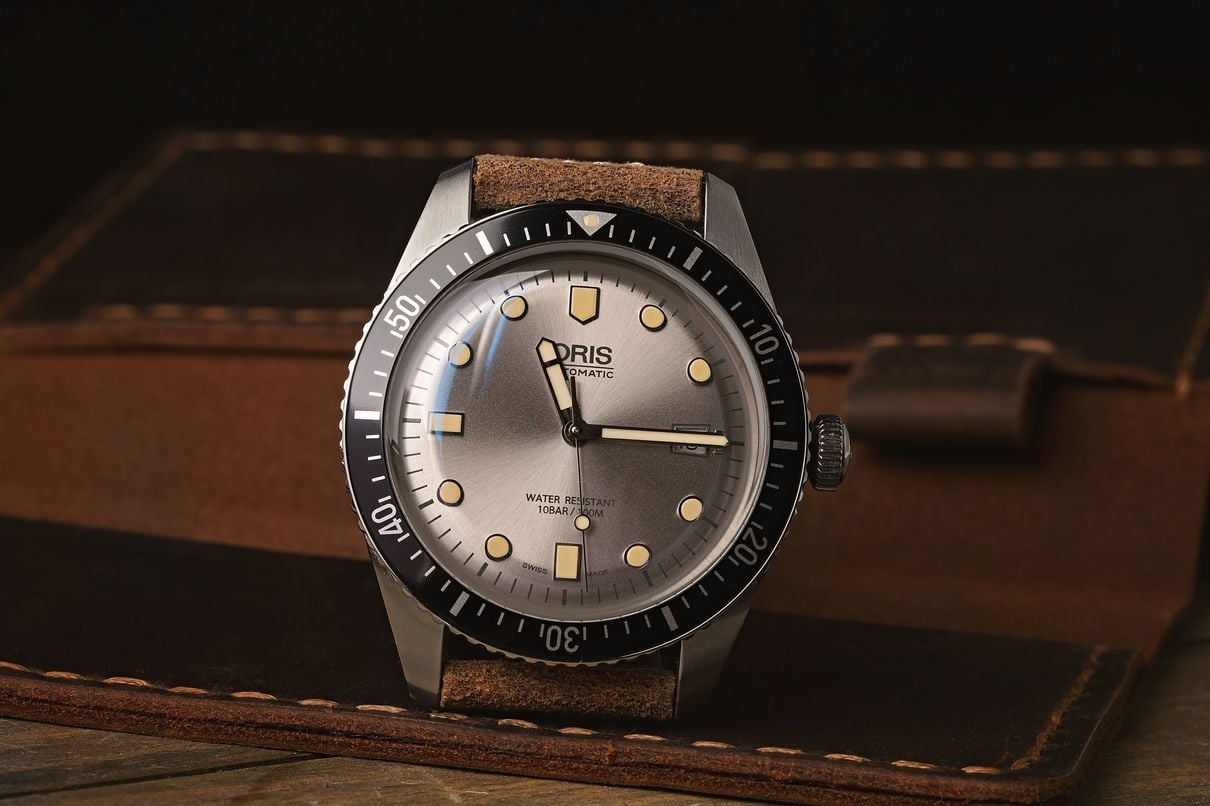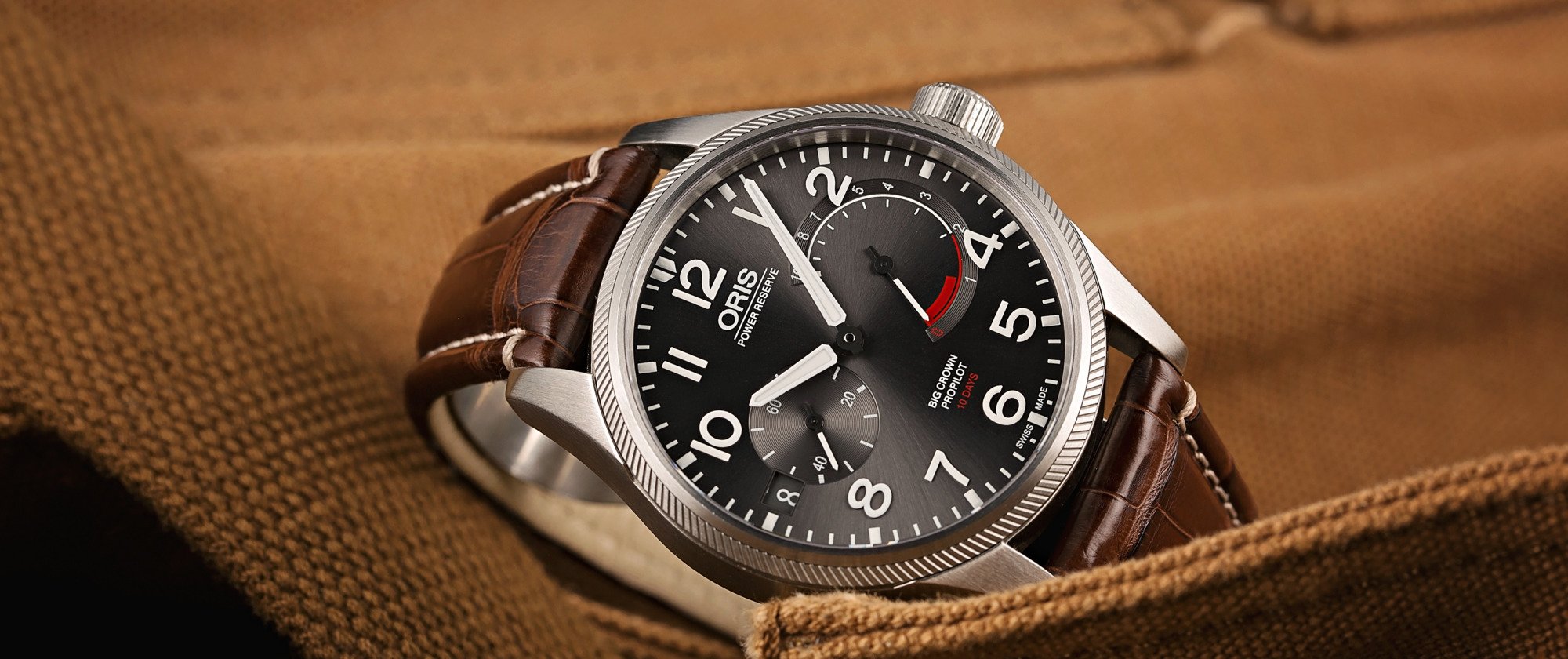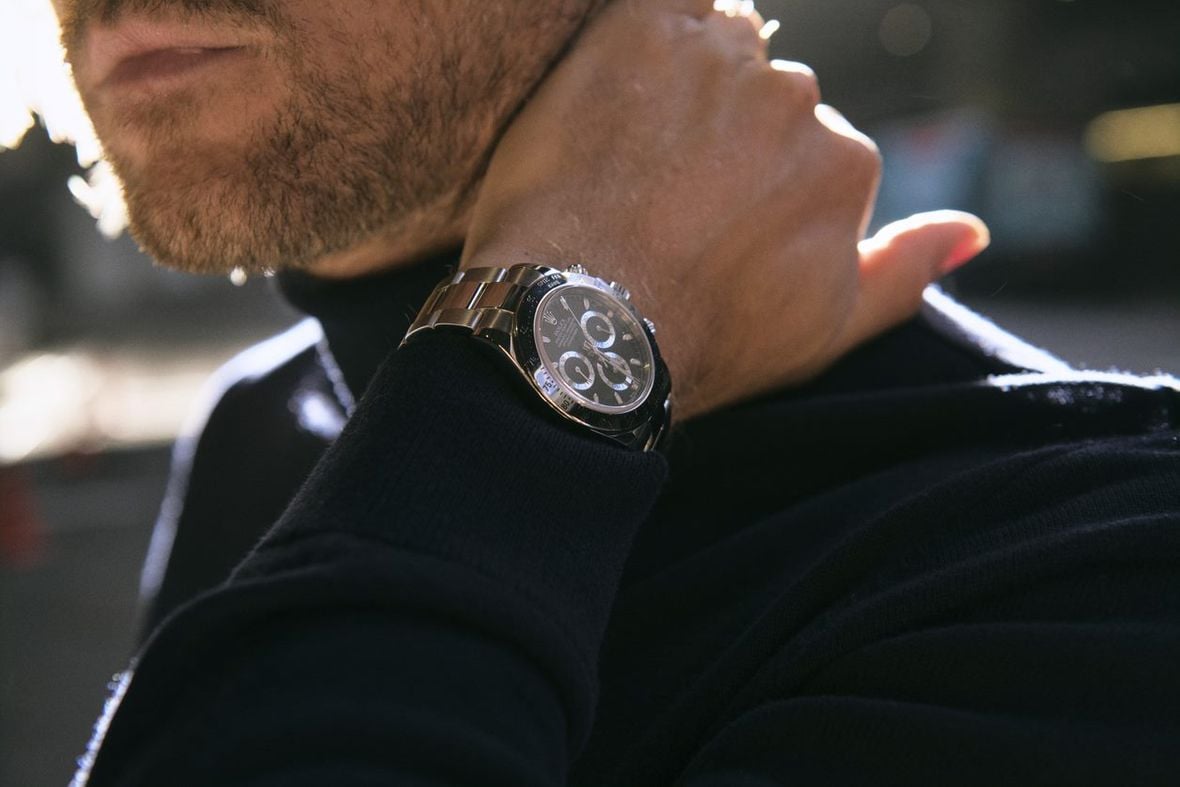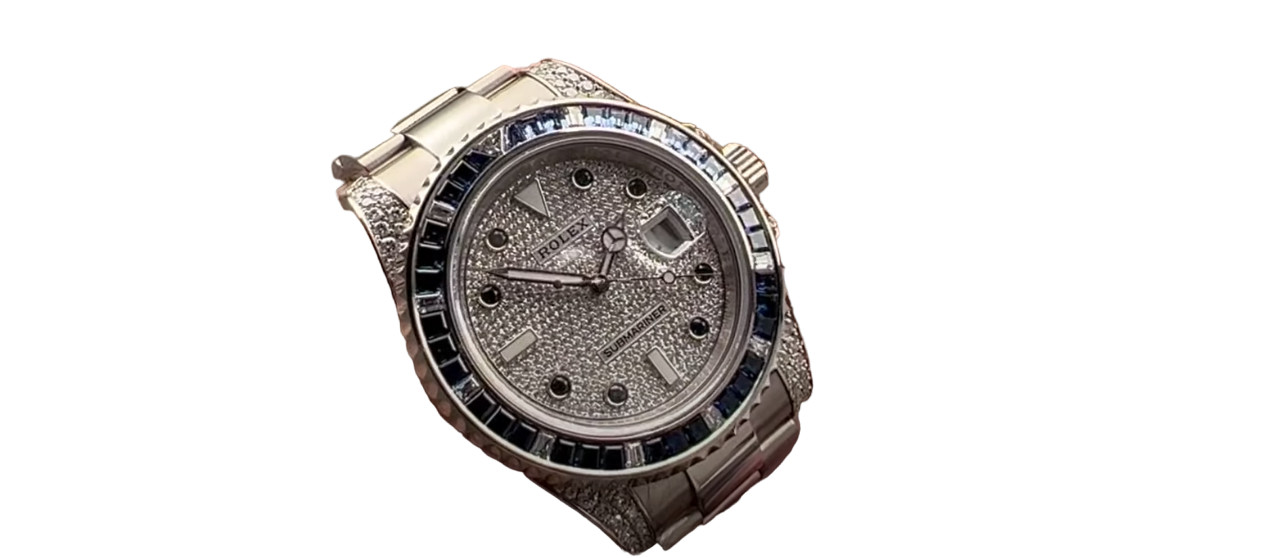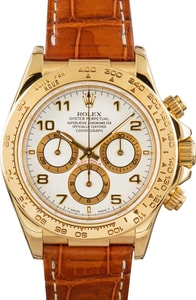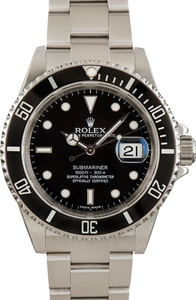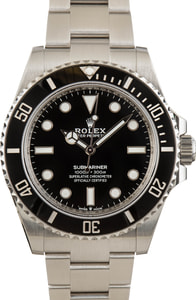Like the other tool watches in the Rolex catalog, the Explorer II was born out of necessity and has since become a coveted collector’s item among enthusiasts from all walks of life. Rolex released the Explorer II in 1971, a few decades after its cousin, the Explorer, came to market. While the Explorer features a time-only dial, smooth bezel, and was inspired by mountaineering and other rugged terrain adventurers, the Explorer II’s niche market is spelunking. We have an excellent example of the Rolex Explorer II ref. 16550 for this edition of Vintage of the Week with a creamy white dial. It hails from the collection’s second generation and is considered by many as a transitional reference. Let’s take a closer look at what makes this watch special, including its history, features, and price.
Rolex Explorer II 16550 Key Details
- Case: 40mm, stainless steel.
- Bracelet: Flat link Oyster, Oysterclasp.
- Crystal: Scratch-resistant sapphire.
- Bezel: Fixed, 24-hour.
- Movement: Automatic caliber 3085, Date, Hacking Seconds, Quickset.
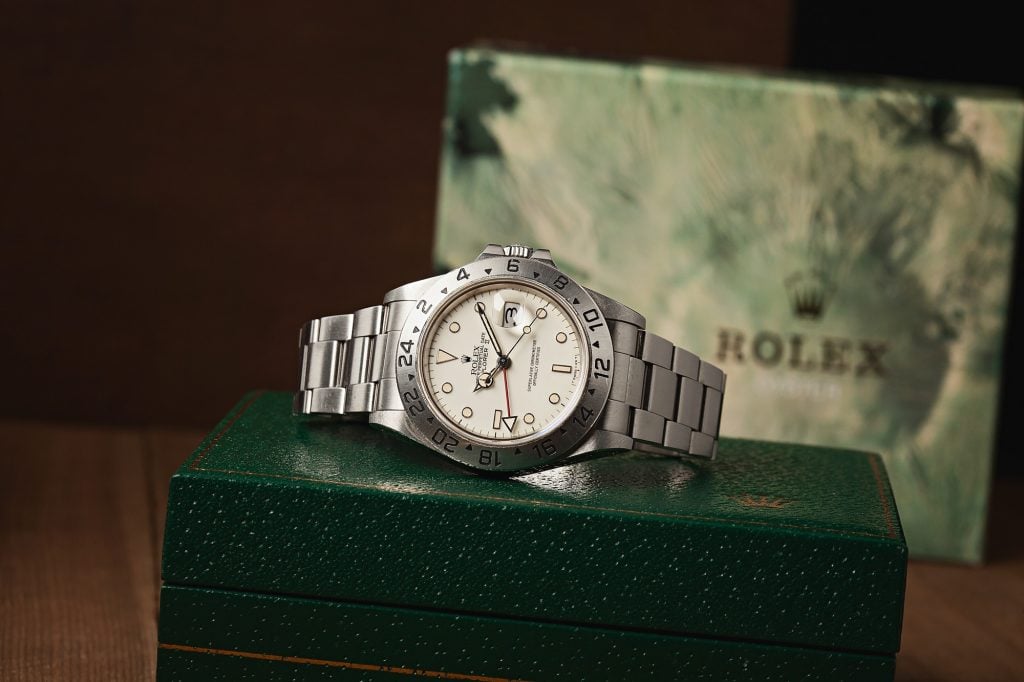
Rolex 16550 History
Ref. 1655 was the first Explorer II. It came to market in 1971 and featured a noticeably more retro aesthetic than its successors. While the bezel features the Explorer II’s standard 24-hour scale, the numerals are separated by hash marks instead of inverted triangles. Additionally, the dial features square-shaped hour markers, straight hands, and the bright orange “Freccione” arrow hand that wouldn’t reappear within the collection until ref. 216570 made its debut for the Explorer II’s 40th anniversary in 2011.
Ref. 16550 replaced the inaugural Explorer II in the mid-1980s. It represents a significant era in the collection’s history because it was the first 5-digit Explorer II. It’s also a transitional reference that builds upon the concept of ref. 1655 and introduces many modern amenities to the series. For starters, the case grew one millimeter, up from 39mm to 40mm. Rolex also swapped the older-style acrylic crystal for scratch-resistant sapphire and upgraded the Explorer II to a higher-beat caliber 3085 Perpetual movement. Perhaps the most significant change is the dial, which now features dot hour markers instead of squares and Rolex’s iconic Mercedes-style hands. The orange hand was shelved for a longer, sleeker red arrow hand, and a white dial option was added to the lineup.
Rolex only produced ref. 16550 for a few years before discontinuing the watch and replacing it with ref. 16570 in 1989. Rolex 16570 Explorer II watches remained in production for several decades, introducing the series to two new movements, calibers 3185 and 3186, and improved luminous material on the dial.
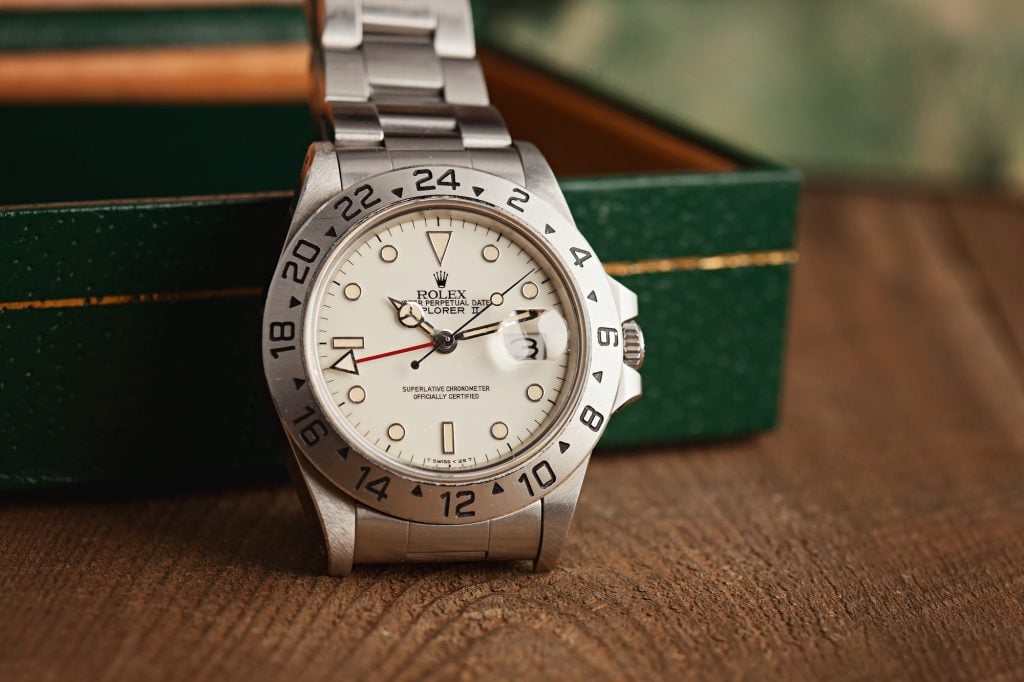
How Does the Rolex Explorer II Work?
Each tool watch in the Rolex professional series caters to a different market. The Submariner was developed for divers, the GMT Master for pilots, and the Explorer for mountain climbers. The Explorer II was created for Spelunking and focuses primarily on keeping time in the dark.
Aside from having luminous hour markers and hands, the Explorer II also features a fixed 24-hour bezel and a dedicated arrow hand. The idea is that the wearer can read the arrow hand against the bezel to distinguish between day and night hours.
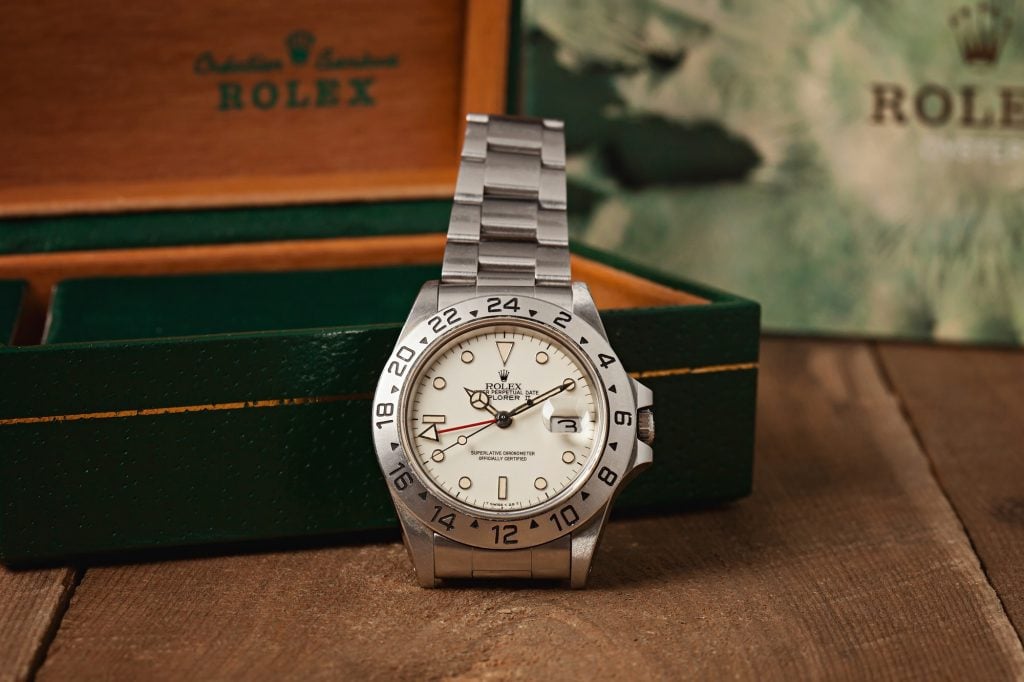
1984 Rolex Explorer II Movement
Caliber 3085 replaced the 1500 series movement ticking away inside the ref. 1655. It operates at a higher frequency of 28,800bph and boasts a 48-hour power reserve. Since the movement was developed in the 1980s, the caliber 3085 also enjoys many modern conveniences, such as hacking seconds, a Quickset function for the date, and, more importantly, an independent arrow hand.
With this upgrade, the Explorer II also acts as a GMT watch because the wearer can adjust the arrow hand independently of the other centrally mounted hands to read another time zone, a luxury not afforded to ref. 1655, which simply displays AM and PM hours on the bezel.
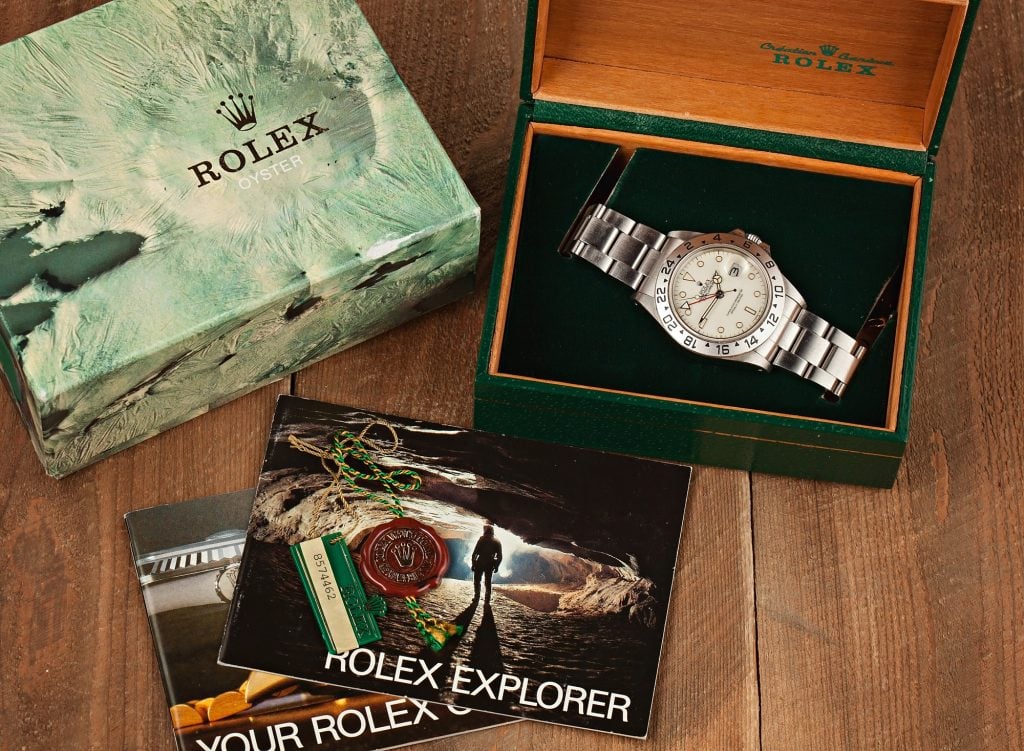
Cream Dial & Overall Condition
Ref. 16550 was the first Explorer II to sport a white dial. The white dial on our example has aged to a creamy white hue over time due to a rare defect in the paint. Rolex fixed the flaw towards the end of ref. 16550’s production, during which the white gold surrounds were replaced with black-trimmed hour markers and hands. Cream dial watches are unusual and often resell for more than other white dial Explorer II’s on the secondary market. What’s also interesting about this example is that the Tritium lume in the hands and hour markers has faded over time to a similar hue.
For a vintage watch, the ref. 16550 showcased in this edition of Vintage of the Week is in excellent condition with nice, crisp edges on the bezel, one of the original green factory stickers still present on the case back, and serial and reference numbers still clearly visible. Of course, the watch also features some typical signs of wear that one would expect from a decades-old tool watch. Overall, it’s a nice example of the cream-dial Rolex Explorer II.
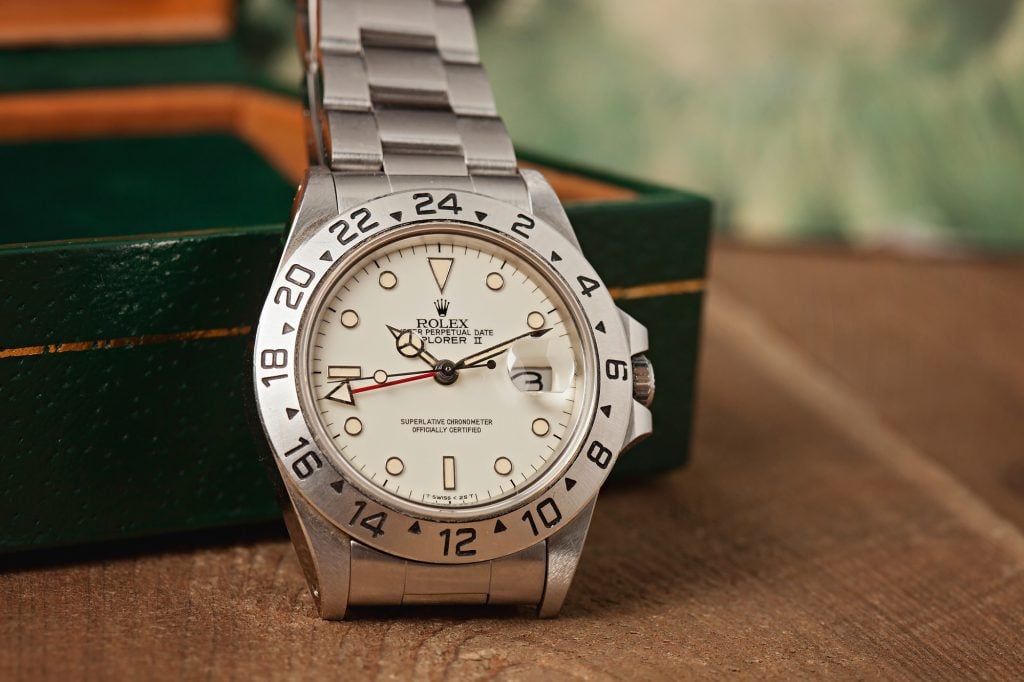
Rolex Explorer II ref. 16550 Price
Typically, the Rolex Explorer II ref. 16550 resells for between $10k and $11k, depending on the condition of the watch. However, rare cream dial examples often trade hands for double or even triple the usual price because so few of them are left in existence due to their short production run and the fact that Rolex replaced many of them during servicing. Pair the rare cream dial with the ref. 16550’s interesting history as a transitional watch, and what you have is a rare and exciting find indeed.


